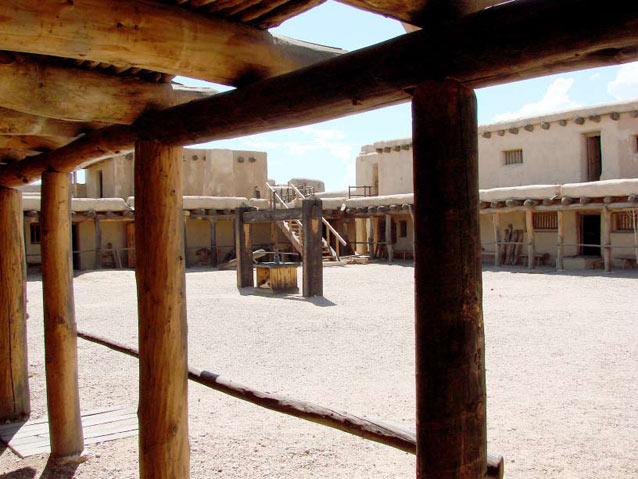The National Park Service (NPS) works in cooperation with the Santa Fe Trail Association (SFTA), a nonprofit organization, to coordinate the preservation and use of the Trail.
This includes providing technical and some financial assistance to Trail projects. Most trail resources (buildings, historic sites, landmarks, wagon-wheel ruts) are managed by private landowners, nonprofit groups, or local, state or federal agencies. The SFTA’s goals focus on preserving, exploring, educating about, and celebrating the Trail.

© David Zettner
The Santa Fe Trail became a part of the National Trails System (NTS) in 1987. The NTS is the network of scenic, historic, and recreation trails created by the National Trails System Act of 1968. Trails in the system provide for outdoor recreation needs, promote the enjoyment, appreciation, and preservation of open-air, outdoor areas and historic resources, and encourage public access and citizen involvement. There are currently 20 national scenic and historic trails in the NTS, with the majority assigned to the NPS. The Santa Fe National Historic Trail is one of twelve national historic trails. A portion of the Santa Fe Trail has been recognized in an additional way. A highway route that approximates the trail’s path through Colorado and northern New Mexico was designated as the Santa Fe Trail National Scenic Byway by the U.S. Secretary of Transportation in 1998.
Much of the Santa Fe Trail is owned by private individuals and organizations. Some sites have limited or no public access. As previously discussed, trail sites are located on four national park units—Fort Larned National Historic Site, Bent's Old Fort National Historic Site, Fort Union National Monument, and Pecos National Historical Park. Efforts are made at the parks to preserve and protect the wagon-wheel ruts. Ruts are protected by preventing ground-disturbing activities in their vicinity and efforts to maintain native vegetation at the sites. For example, at Fort Larned, managers and researchers are monitoring prairie dogs in the vicinity of trail ruts due to concerns that the animals’ burrowing activities are impacting the ruts. Although it is NPS policy to conserve and recover prairie dogs wherever possible, populations can be controlled in some cases, including the prevention of damage to park resources.
Part of a series of articles titled The Santa Fe Trail.
Last updated: March 18, 2016
